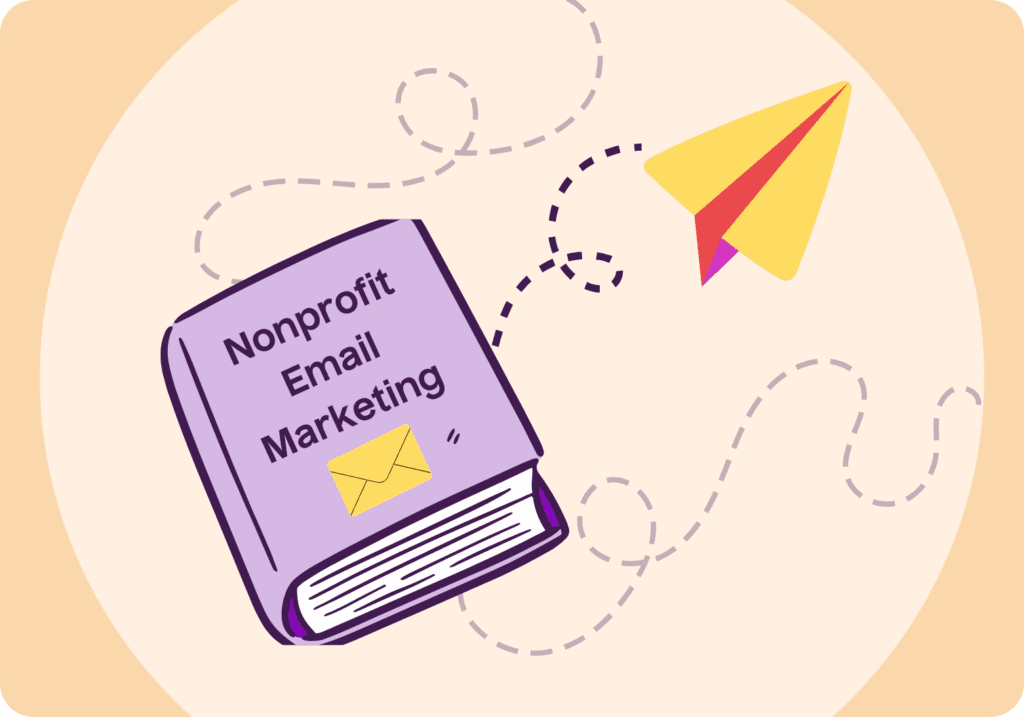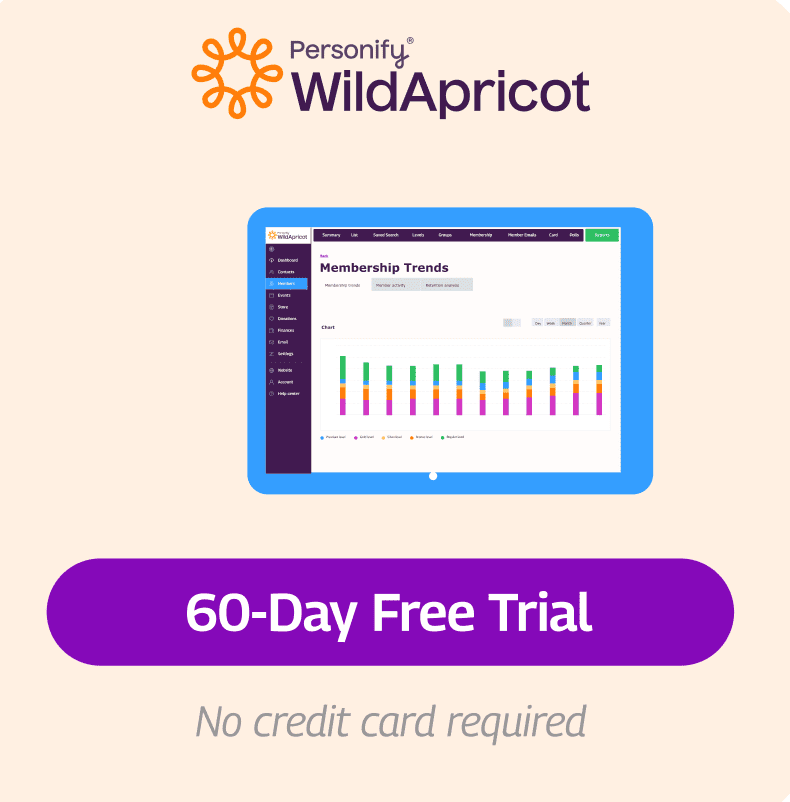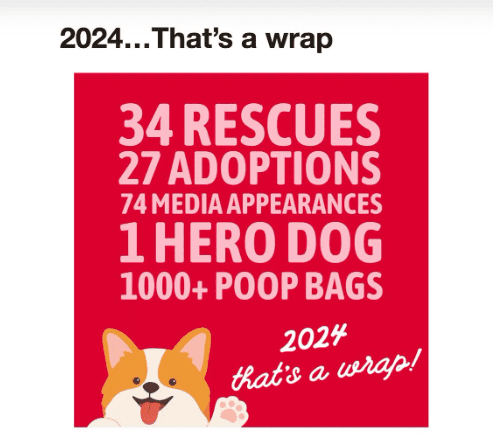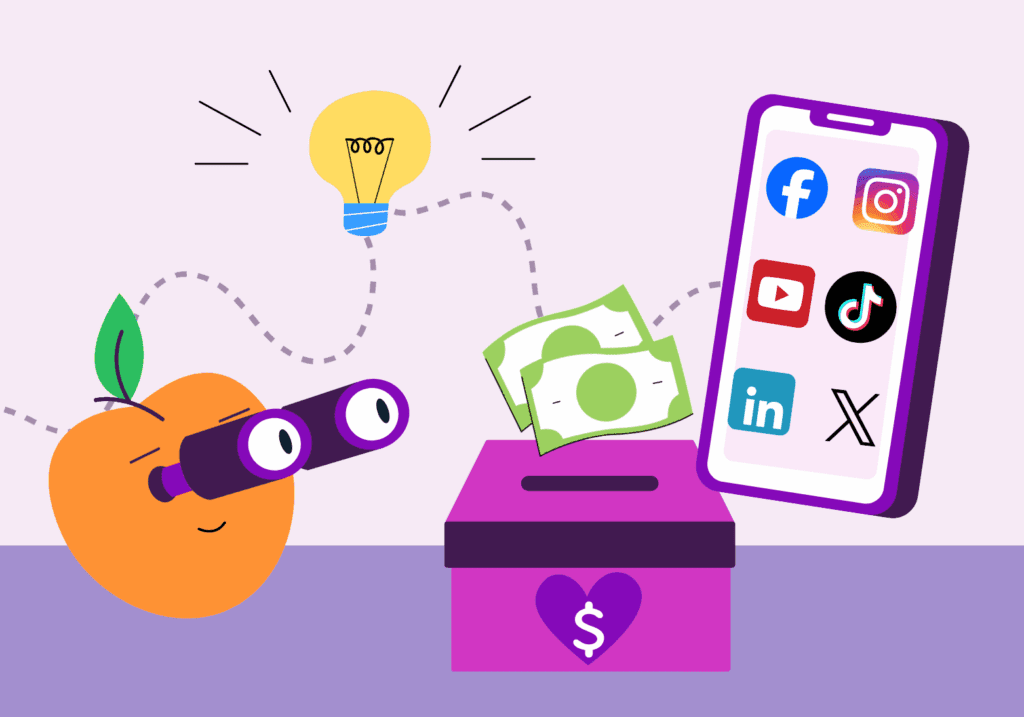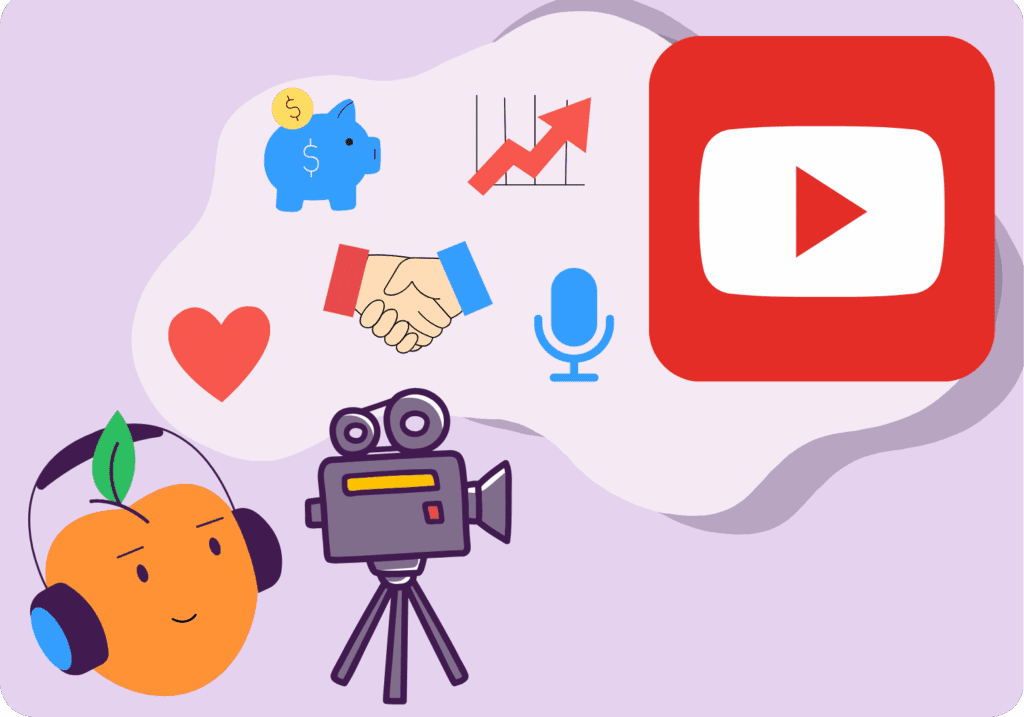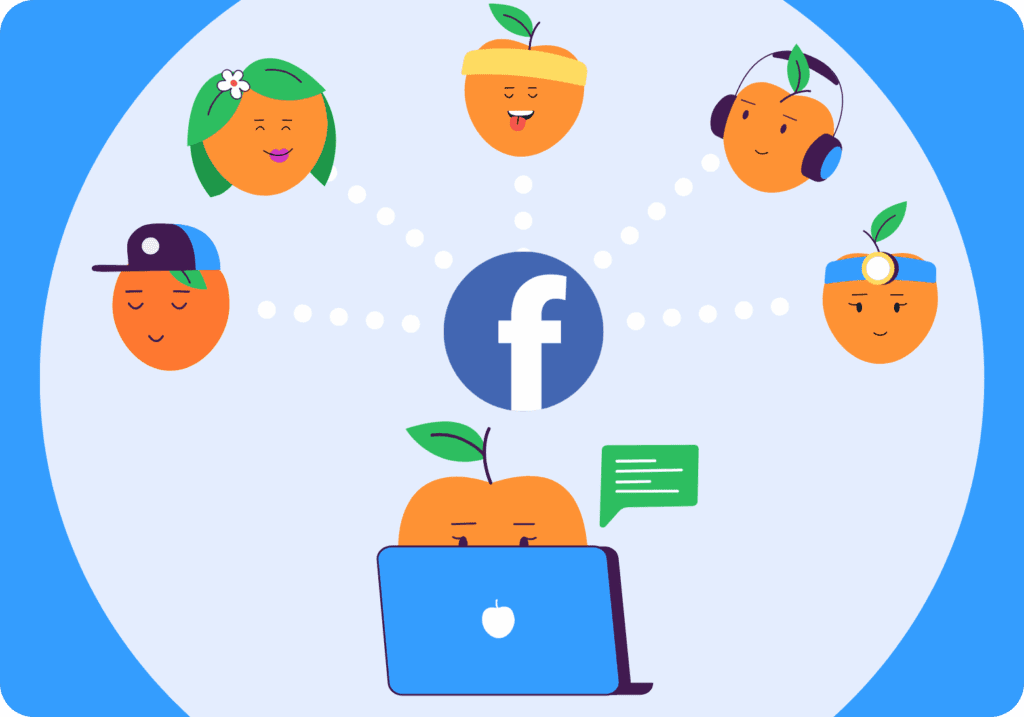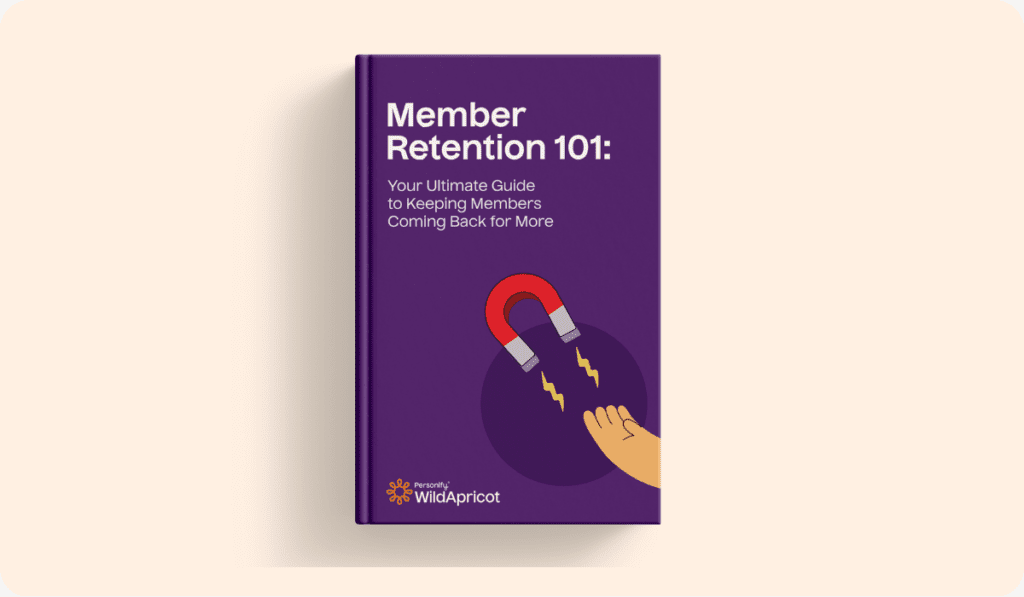How can you ensure that your nonprofit’s emails are actually getting read?
With over 4.5 billion email users worldwide (projected to reach 4.8 billion by 2027), inboxes are packed – and your message is just one of hundreds competing for attention. According to Harvard Business Review, professionals check their email 15 times a day on average. This means that your email is still a powerful way to engage supporters – but only if you can break through the noise.
If you’ve clicked on this article, you’re looking for some guidance. Chances are you’ve tried things like witty subject lines, heartfelt stories and even emojis (perhaps lots of emojis). Yet, your emails have low open rates and even lower click-through rates.
No time to read the whole blog? Here are a few key changes that you should consider:
- Segmenting the audience into groups. Monthly donors, event attendees and volunteers don’t always need the same email. For example, send event reminders only to attendees and impact updates only to donors. Consider testing different content assets for new versus long-time supporters. I bet you’ll see an immediate difference.
- Personalizing beyond just the first name. Once you’ve segmented your emails, include location-specific stories and personalized calls-to-action, like CTAs that reflect past donations. These email marketing strategies sound small, but they help boost clicks.
- Running A/B tests on subject lines. Some people will respond better to specific verbiage. For example, you could test “You made a difference last month” versus “See the impact you created” – you might find that the second version’s open rates boost by nearly 15%, even though the sentiment is the same.
Ready to dive deeper and become an email marketing master?
Whether you’re just getting started or refining an existing approach, this guide walks you through proven best practices, key email types and smart platform choices to help your nonprofit’s emails stand out, get opened and drive results.
We’ll cover:
- 13 Tips for Email Marketing Best Practices
- The 6 Types of Nonprofit Emails to Send
- How to Choose the Right Email Marketing Platform for Your Nonprofit
Nonprofit Email Marketing Best Practices
From growing your nonprofit email list to optimizing calls to action, we’ve got the 13 most effective nonprofit email marketing practices to cover. These are real-world strategies designed to help nonprofits like you improve email open rates, increase engagement and ultimately drive more mission-aligned actions from supporters.
At the end of this guide, you’ll know how to get better results from your email outreach and how to create emails your supporters actually want in their inboxes.
💡Tip 1: Actively Build Your Email List
Let’s start with your “send” list. You probably put a lot of time into crafting each email, so the last thing you want is to send it into the void (or just a handful of inboxes). That’s why a strong email strategy starts with growing a healthy, permission-based list (we’ll cover more on email laws later).
- Email growth tip: Promote your email sign-up via your website, donation thank-you pages, social media and even printed materials like QR codes at events to reach new supporters – no matter how they engage with your cause.
- Team role: Assign a dedicated staff member or team – often the communications or development manager – to maintain the list, ensure compliance and coordinate growth efforts.
Takeaway: More isn’t always better. But a well-targeted, actively managed email list is the backbone of nonprofit email success.
Read more: Why Your Nonprofit Email List Isn’t Working (and How to Fix It)
💡Tip 2: A/B Test Frequently
A/B testing goes beyond just subject lines. You can test the types of content, visuals and CTAs in your emails. By testing every aspect of the emails you send, you can improve open and conversion rates, yielding an average 42:1 ROI.
Monitor your supporters’ behavior and use these results to refine your strategy; what works this year might not work next year. Don’t be afraid to get creative and see what makes your audience smile (and open your emails).
💡Tip 3: Automate Smartly
Nonprofits using email automation experience 70.5% higher open rates and 152% higher click-through rates. Not only does automation yield a better ROI, but you’ll also save time and money. Working with smaller staff and tighter budgets means focusing staff time on building relationships with supporters, not sending emails.
Automate key sequences like:
- Welcome emails
- Membership dues reminders
- Event promotion
- Anniversary reminders
- Lapsed donor check-ins
- and more!
This will effortlessly keep your members engaged and your nonprofit at the forefront of their minds.
Read more: The Complete Guide to Marketing Automation for Nonprofits + Top Tools to Use
💡Tip 4: Clean Your List Regularly
While building your subscriber list is crucial, don’t forget to remove inactive subscribers. Email bounces hurt deliverability. An engaged list protects your reputation and ensures better inbox placement.
Did you know: 8 billion spam emails are sent in the US every day. You don’t want unengaged individuals in your mailing list to mark you as one of them!
💡 Tip 5: Design for Mobile First
Over 53% of nonprofit emails are opened on mobile devices, and non-optimized emails are 50% more likely to be deleted. Use responsive design, short paragraphs and finger-friendly CTAs for best results.
Many email tools provide a preview for desktop and mobile, be sure to check both before sending out your marketing communications.
💡 Tip 6: Include One Clear Call to Action (CTA)
When sending an email, there’s typically something you want the reader to accomplish. Whether your goal is for them to register for an event, donate to your fundraiser or read the latest content you published – a CTA will be somewhere in your email. Here are the top tips for the highest conversion calls-to-action:
- Emails with personalized CTAs see 202% more conversions
- CTAs surrounded by more white space can increase conversion rates by 232%
- Button-based CTAs can improve click-through rates by 32.12% as opposed to text-based CTAs
- An early CTA will perform better than later in the email – higher clicks are associated with the first paragraph
Overall, one action per email makes it easier for readers to know what to do next, and act on it.
Read more: Donation Button Best Practices: Make It A Must-Click and Raise More Funds!
💡Tip 7: Keep Content Concise
The best-performing nonprofit emails range between 50–200 words, depending on the type. Respect your reader’s time with short, impactful messaging.
Every once in a while, it’s fine to share a lengthy story or impactful message, like your annual letter to subscribers and supporters. But for the average email or newsletter, brevity will be your friend.
💡Tip 8: Know the Spam Laws That Apply to Your Audience
Make sure you’re following the law and in compliance with laws like:
All email addresses must be permission-based – either implied (as a donor or member) or explicit (via a form or opt-in). Implied consent applies when there’s an existing relationship, like a recent donation or volunteer work. Build and maintain your list ethically to avoid legal and reputational risks.
💡Tip 9: Personalize Beyond the First Name
If time allows, tailor messages based on donor history, preferences or location – not just first name – to boost relevance. 63% of nonprofits utilize personalization in their email marketing and personalized subject lines are 26% more likely to be opened. It’s just one more tool you have in your repertoire to help your messaging stand out to your subscribers.
Don’t have time to personalize the email? That’s okay – even a personalized subject line can increase open rates by 26%, according to HubSpot.
💡Tip 10: Segment Your Audience
Like personalization in your messaging, having segmented email lists yields a significant increase in click-through rates and overall engagement. According to Campaign Monitor, segmented campaigns generate up to 760% more revenue, with higher open and click rates. Customize messaging for lapsed donors, volunteers, prospects or monthly givers.
💡Tip 11: Send Automated Welcome Emails to New Members
According to Harvard Business Review, welcome emails have 202% higher open rates than typical emails and set the tone for engagement. Set up an automated welcome series to onboard new subscribers and reinforce your mission. (Bonus: Everyone wants to feel welcomed, so when you’re ready to dive deeper, consider these best practices for setting up the ultimate new member welcome packet.)
💡Tip 12: Send with a Consistent Cadence
Set up a good schedule. Sending 1–2 emails per month keeps donors engaged without overwhelming them. Find – and then maintain – a steady rhythm tailored to your audience. If your subscribers are expecting a monthly email, don’t leave them hanging!
💡Tip 13: Track and Adapt Based on Metrics
Here are typical nonprofit email averages:
- Open rate: ~28.6%
- Click-through rate: ~3.3%
- Donation conversion rate: ~0.2%
Takeaway: Monitor your metrics, test continuously, and evolve your strategy – and don’t forget A/B testing!
💡 Bonus Tip: The 6 Core Cs of Nonprofit Email Marketing
If all else fails, following the 6 core Cs of email marketing will help your message make an impact. No matter your email, keep these in mind:
- Concise – short and sweet messaging
- Clarity – easy-to-understand verbiage
- Call-to-Action – guide the reader to the next step
- Consistency – stick to the schedule you set
- Credibility – maintain trust in your organization
- Compassion – keep your nonprofit’s mission at the forefront
- Compliance – follow the laws of email messaging
6 Great Types of Nonprofit Emails You Can Send
Now that you’ve optimized for deliverability and improved your email open rates, the next step is knowing what type of emails to send – and why.
The most effective nonprofit email campaigns align your content with your organization’s goals: whether you’re raising awareness, increasing donor engagement, driving advocacy or promoting fundraising campaigns.
Below are six essential types of nonprofit emails – used by successful organizations of all sizes across the U.S., Canada, the UK and beyond – that consistently deliver results. Each type serves a unique purpose in advancing your mission and fostering lasting relationships with supporters.
Nonprofit Email Content Ideas That Click
#1: Newsletters: Update and Educate
There are many examples of amazing email newsletters. The key is to narrow down what you want to say and provide real value to your reader. Share your latest news, success stories, and resources to keep your audience informed and connected. Use simple, clean templates and make it easy to scan. Carnegie Foundation for the Advancement of Teaching shares a terrific newsletter archive, with a different theme each month. The writing is clear, educational, and speaks directly to the reader.

#2: Appeals: Call to Donate
State exactly how donations make a difference. This helps drive fundraising by connecting on an emotional level. For example, WWF’s newsletter has a simple, clean design and an emotional request.

#3: Advocacy: Call to Act
Mobilize supporters with easy, meaningful actions like signing petitions, sharing campaigns, signing up for nonprofit webinars, or where to join local events. Provide options to engage based on their availability. This type of email amplifies your cause and creates much stronger community action. For example, NonprofitHR promotes an “on demand” webinar that readers can click to watch anytime – and still be involved.
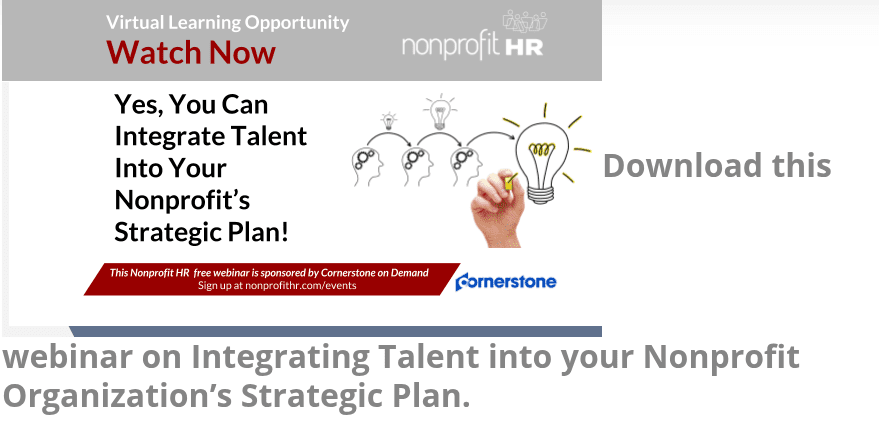
#4: Thank You: Show Appreciation & Impact
Express your sincere gratitude. This type of email from UNICEF is an example of an emotional, authentic thank-you. It is simple, yet it ensures their donors feel valued, keep giving, and spread the word.

Read more: How to Write The BEST Thank-You Letter for Donations (+ 3 Templates & Samples!)
#5: Share a Success Story
Tell personal stories about your nonprofit’s work. Use interviews and authentic photos. Everyone loves a success story, so use your mission to inspire continued support. The animal rescue nonprofit The Arrow Fund proves that sometimes, you don’t even need to write a lot to make an emotional impact.
#6: Honor a Significant Day
Think about important dates or timely occasions, such as Volunteer Week, National Mental Health Awareness Month, or Earth Day, to connect your cause with broader movements. Sending an email tied to key dates that matter to your audience boosts relevance and shareability.
For example, the nonprofit Feed My Starving Children sent this email two weeks before Giving Tuesday promoting holiday-themed gifts from its shop handmade by program beneficiaries.

Choosing the Right Email Marketing Platform for Your Nonprofit
In today’s digital landscape, email remains one of the most effective tools for nonprofits to engage supporters, mobilize volunteers, and drive donations. Finding the right email marketing platform can significantly impact your ability to scale your mission. In fact, email marketing yields an average ROI of $42 for every $1 spent.
While there are many platforms available, each comes with its own strengths and limitations. Mailchimp – one of the earliest players in the space – may require add-ons for nonprofits needing integrated donor management or advanced automation. Constant Contact is another early player, with roots going back to 1995. While Constant Contact offers basic email tools and event features, it can feel limited for organizations with growing or complex needs. And while HubSpot is known for being powerful, it’s also complex and costly, which can be a barrier for smaller nonprofits or those with limited technical resources.
Ultimately, your nonprofit needs a platform that doesn’t make you juggle multiple systems. To save you time, look for solutions that streamline your email marketing and membership management in one place.
Here are our top 6 picks for the nonprofit industry:
1. WildApricot: Email & CRM Made Simple
Yes, we have an email marketing platform!
WildApricot lets you easily manage your members and communications all in one place. From storing member information to creating professional, branded email campaigns, WildApricot provides tools to:
- Build emails from customizable, mobile-friendly templates
- Automate and schedule newsletters, event reminders, and e-blasts
- Segment contacts into lists such as members, donors, or event attendees
All of this helps you track member engagement and strengthen relationships without extra hassle.
When you integrate our email and contact database software with your membership management software, you will have tons of information on your subscribers—including membership status, event registrations, and donations made.
WildApricot provides several professionally designed and mobile-friendly email templates, insights, automated email series, and even a mobile app so you can manage contacts on the go.
Our drag and drop interface also makes it quick and easy to send emails that look professional even for small organizations.
Here’s what it looks like:

2. MemberClicks: A CRM Built for Membership Growth
MemberClicks is a cloud-based CRM tailored for membership organizations like nonprofits and associations. It automates key tasks such as dues renewals and new member onboarding, while offering flexible email marketing features including:
- Designing mobile-responsive emails
- Automating renewal and event-related emails
- Tracking email interactions within member profiles
One happy MemberClicks user shared this testimonial:
“We now reach members in 120 countries – a 40% growth in membership! There are certain concerns with not being able to pay in U.S. Dollars, and MemberClicks gives us that ability to be flexible and work with our members.”
Both WildApricot and MemberClicks combine powerful email marketing with CRM and membership management capabilities. These platforms help nonprofits like yours build stronger relationships through targeted, automated campaigns and easy-to-use tools.
3. Bonterra
Bonterra is more than an email marketing platform — it’s also a full-on CRM. Previously SalsaLabs, Bonterra is a robust one-stop-shop constituent engagement and management platform. Its email capabilities include mobile optimization, drag-and-drop editor, automated emails series, and A/B testing.
And remember when we said how important segmenting your audience is? Bonterra automatically adds contacts to new lists based on their behavior or activity.
4. MailChimp
You’ve definitely heard of this one! Mailchimp has a standard plan for up to 6,000 email sends and 500 contacts for only $20/month, which is great for small or just-starting-out organizations. MailChimp offers an easy drop-and-drag editor, insights, automation series, lead capture landing pages, and A/B testing.
What sets them apart is its capability to integrate with hundreds of other platforms and apps, like SalesForce, Canva, and Eventbrite. Audience segmentation is possible, but not as sophisticated or intuitive as other platforms. Our favorite paid feature is sending out emails at optimized times based on subscriber’s data.
5. Constant Contact
Rivaling MailChimp as a leading email marketing service, Constant Contact provides user-friendly mobile-optimized templates, list segmentation, insights, and lead-capture landing pages.
This service also allows you to build a mobile-responsive donation pages, and drag and drop donation action blocks into any email. Constant Contact has a free trial and nonprofit pricing.
6. Campaign Monitor
In addition to the basic easy to design mobile optimized templates, list segmentation, and insights, Campaign Monitor also has an incredibly useful spam tester. Our favorite feature is the dynamic content capabilities, which allow you to change text and images based on the subscriber – talk about personalized messaging! While Campaign Monitor does not have a free plan, it’s still an affordable email newsletter service for nonprofits since it has a pay per campaign plan and a basic plan at just $11/month.
There you have it: everything you need to get started and create a great email marketing strategy, or refine the one you’re already using.
Wrap-Up: Connection Matters 🫶
Nonprofit email marketing in 2025 isn’t just about hitting “send” anymore – in today’s crowded digital world, it’s about connecting authentically with your community.
This guide has helped you learn smart, modern strategies to grow engagement. With a solid list, clear messaging, and a thoughtful cadence, your emails will cut through the clutter and inspire action.
Ready to craft emails that really get opened, clicked, and loved? Let’s make it happen.

